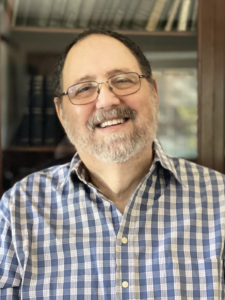
Rabbi Lance J. Sussman
Parshat Ki Tisa
About 30 years ago, I was invited to participate in an interfaith Thanksgiving service at the main Catholic church in Binghamton, New York. I thought it would be a good idea to bring my two older children with me.
No sooner had we entered the sanctuary than they stopped and told me they could not go in the church, which was richly adorned with stained glass windows, Christian religious symbols and statues of saints. “What’s the problem?” I asked. “Dad,” they blurted out, “there are idols in there! We cannot go in.”
A quick but intense discussion followed in which I acknowledged Judaism’s unwavering prohibition of idol worship and then explained that there were some rabbis as far back as the Middle Ages (such as Menachem haMeiri, d. 1315) who did not view Christianity as idolatrous and that, in modern times, leading rabbis attend services in churches like Westminster Abbey and the National Cathedral in Washington, D.C.
Furthermore, the service we were attending was ecumenical. I am not sure they completely believed me, but they decided to come in and sit in the back.
This week’s Torah portion, Ki Tisa, includes the story of the Golden Calf, the dramatic moment during the Exodus when the people of Israel lapsed into idolatry, sparking an angry reaction from Moses and the smashing of the tablets he had just received on Mt. Sinai.
Moses then had to assuage the anger of the Eternal, and an agreement was reached for the prophet to return to the top of Sinai and receive a second set of commandments. According to tradition, Yom Kippur was then established as an eternal path for atonement and forgiveness.
Although the Ten Commandments include a prohibition on images in the Jewish tradition, Judaism in the biblical tradition did include art such as the representations of the cherubim on the Ark of the Covenant. Subsequent tradition is replete with discussion about art, idolatry and false worship.
To help navigate a path between the prohibition of all art and idolatry, the rabbis developed the notion of Hiddur Mitzvah — the beautification of the commandments as in creating sukkah decorations and beautiful ritual items like Torah crowns. But the problem of images continued, particularly of the human form. On the other hand, the prohibition of any visual representation of God remains in place to this day.
Not surprisingly, all types of artistic experiments were attempted by the Jewish community to find a way to express their religiosity through visual art.
In the ninth century in Israel, Jews created micrography, pictures drawn with minute sacred texts. Later, in Germany a Haggadah was created with images of people with the heads of birds and, in Renaissance Italy, Jews were permitted to have sculpture in their homes, so long as they were imperfect and not usable for worship. Still later, questions were posed about including images of lions on synagogue arks out of concern that the appearance of idolatrous worship of lion-gods was taking place.
Not until the modern period did Jews begin to create art on a regular basis. In the 18th century, a famous rabbi refused to sit for a portrait, concerned that it would be idolatrous. However, within 100 years, numerous rabbis allowed portraits to be made of them so that they could model “tradition” in an age of diminishing religious practice.
By the dawn of the 20th century, the Zionist movement resolved to create a national Jewish art academy after Betzalel, the artist commissioned by Moses to design the Sanctuary in the desert during the Exodus.
Although questions remain in contemporary Judaism about the nature of idolatry, visual art has become a “normal” feature of Jewish life. However, tensions remain just below the surface as in the novel “The Chosen” (1967) and the Israeli television series “Shtisel” (2013). Hundreds of thousands of Jewish homes display reproductions of paintings by Chagall and artistic Ketubot are widely obtained for weddings.
Today, Jewish life without art is unthinkable but, at the same time, we need to continue to think about what constitutes Jewish art.
Lance J. Sussman is rabbi emeritus of Reform Congregation Keneseth Israel and the immediate past chair of the board of governors of Gratz College. He is the scholar-in-residence of Philadelphia’s Holocaust Awareness Museum and Education Center and is editing a second volume of his sermons. The Board of Rabbis of Greater Philadelphia is proud to provide diverse perspectives on Torah commentary for the Jewish Exponent. The opinions expressed in this column are the author’s own and do not necessarily reflect the view of the Board of Rabbis.



